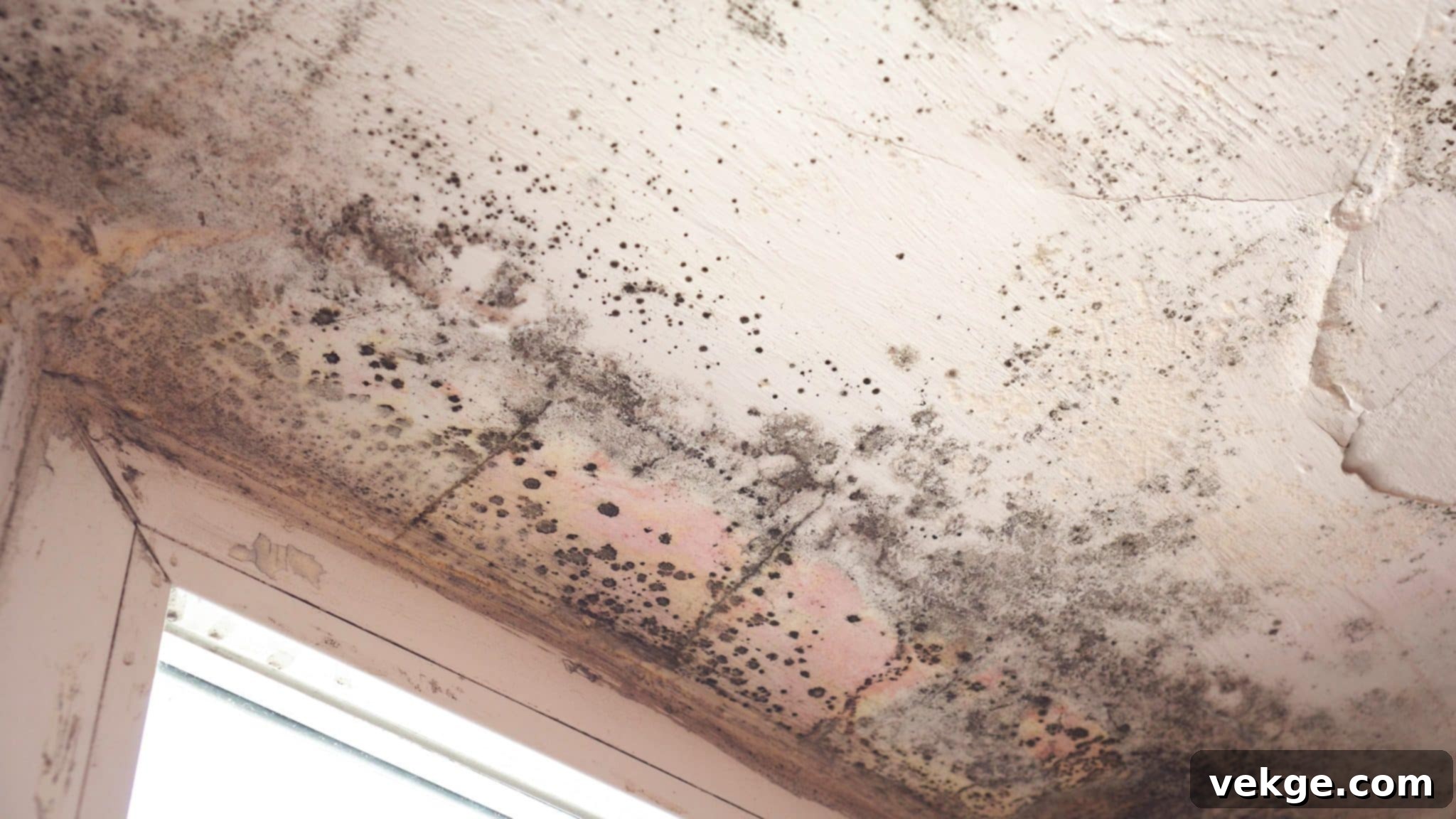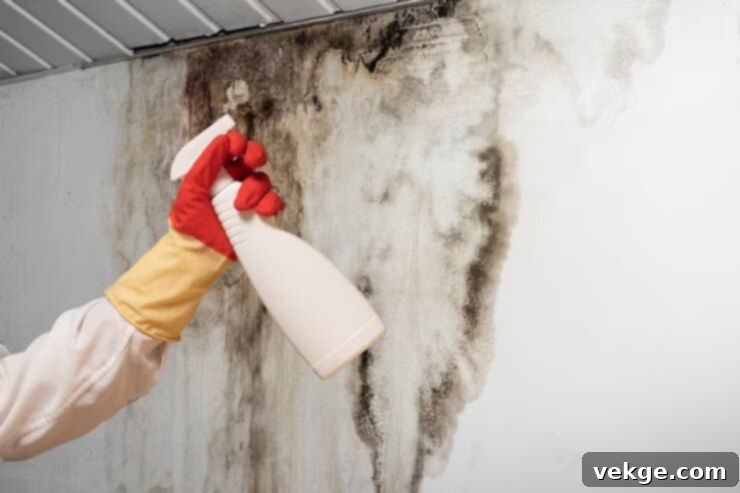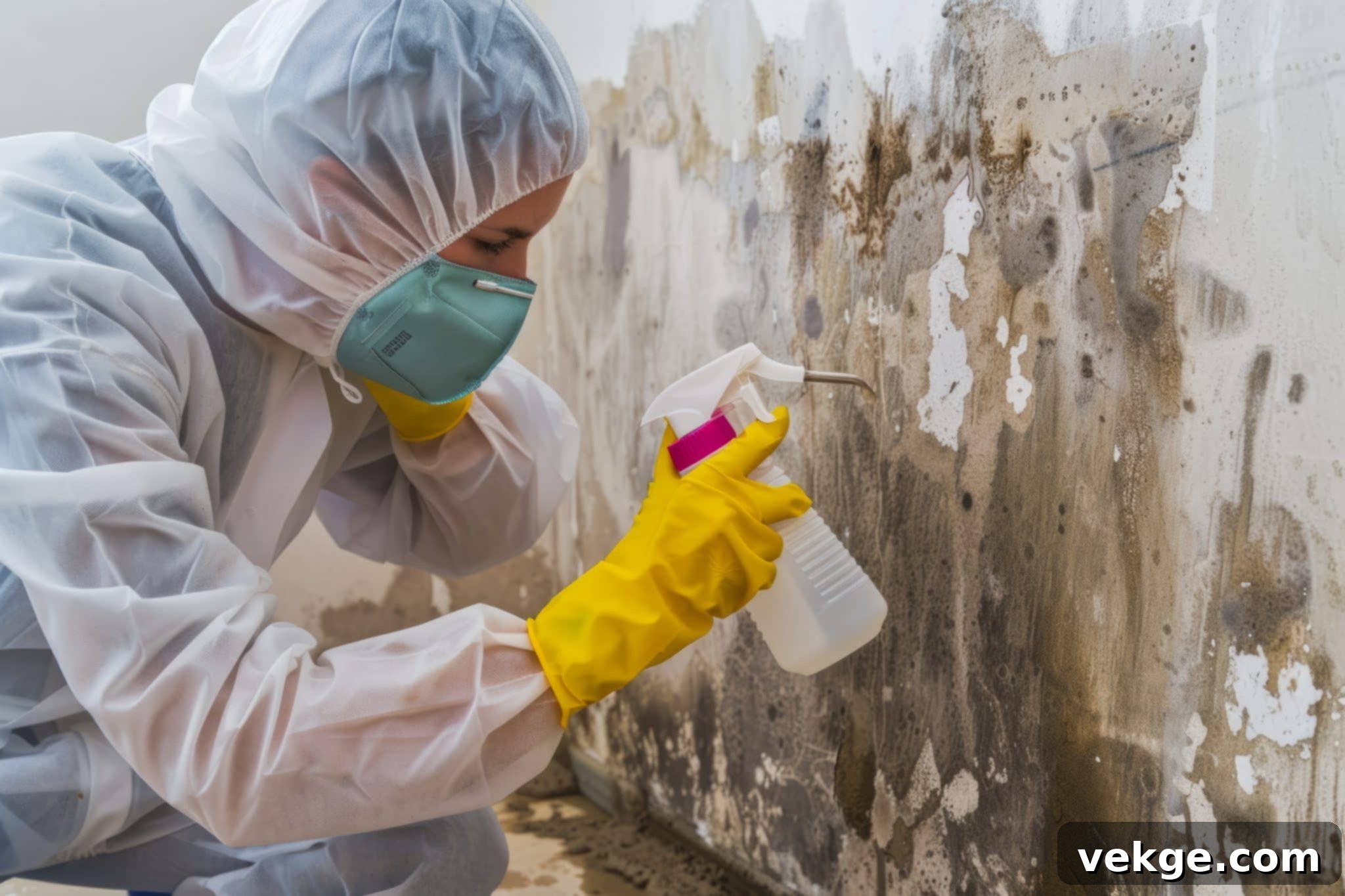Comprehensive Guide to Mold: Identifying Signs, Preventing Growth, and Understanding Professional Remediation
Have you ever noticed a persistent musty smell permeating your basement, or perhaps spotted unwelcome dark patches on your walls or ceiling? These aren’t just minor annoyances; they are often tell-tale signs of mold growth, a pervasive problem that can severely impact both your health and the structural integrity of your property. Fortunately, there’s a clear and effective solution: professional mold remediation and inspection.
This comprehensive guide will delve deep into the common indicators of mold, helping you identify its presence early. More importantly, we’ll explore why professional mold inspection and remediation services are not just beneficial, but absolutely essential for maintaining a safe, healthy, and valuable home environment.
What Are the Signs of Mold Growth?
Mold growth can be deceptively subtle at its onset, often hiding in plain sight or behind surfaces. However, several key signs reliably indicate its presence. Recognizing these indicators early can be crucial for preventing widespread damage and health issues. Here are the most common signs that mold might be taking root in your home, especially in moisture-prone areas like the basement:

1. Musty Odor
One of the earliest and most prevalent indicators of mold is a distinctive, earthy, and persistent musty smell. This odor is particularly noticeable in areas with limited ventilation, such as basements, crawl spaces, or bathrooms. The smell arises from volatile organic compounds (VOCs) released by actively growing mold. Even if no visible mold is present, this tell-tale odor strongly suggests that mold may be thriving in hidden spots—behind drywall, under flooring, or within insulation. Ignoring this scent is akin to ignoring a smoke alarm; it’s a clear warning. Addressing the underlying moisture issues quickly is paramount, and professional service providers like Water Damage Saviors can help prevent further damage by tackling the root causes of mold growth, ensuring the problem is resolved at its source.
2. Visible Mold
When mold becomes visible, it’s often a sign that the problem has progressed. Mold can manifest in a variety of forms and colors, commonly appearing as black, green, white, gray, or even reddish-brown spots. It typically forms in irregular patches on walls, ceilings, floors, and other surfaces, frequently in areas affected by moisture. Sometimes, visible mold can be mistaken for dirt, soot, or mildew. However, if you observe discolored areas that spread, grow, or change texture over time, it is highly likely to be mold. It’s important to remember that if you see visible mold, there’s a high probability that more is growing out of sight, making a thorough inspection essential.
3. Water Damage or Stains
The presence of water damage, persistent damp spots, or unexplained discoloration on walls, ceilings, or floors are prime indicators of underlying moisture problems that inevitably lead to mold growth. These stains might be yellow, brown, or even dark black, and they often indicate a past or ongoing leak, condensation issue, or flooding event. If you notice stains that persist or worsen over time, especially after known incidents like roof leaks, pipe bursts, or basement flooding, it’s imperative to investigate for mold. Mold thrives on moisture, and where there’s chronic water damage, mold is almost certainly present or will soon develop.
4. Peeling or Bubbling Paint or Wallpaper
Excessive moisture trapped behind walls or beneath surfaces can exert pressure, causing paint to peel, bubble, crack, or wallpaper to warp and lift. This phenomenon is often a clear signal that moisture has infiltrated the structural materials, creating an ideal, damp environment for mold to proliferate underneath the surface. The moisture weakens the adhesion of paint and wallpaper, allowing them to separate from the wall. This is not merely a cosmetic issue; it’s a strong visual cue that hidden mold might be actively growing, deteriorating your walls from within.
5. Allergic Reactions and Health Symptoms
Frequent allergic symptoms, respiratory issues, or unexplained health problems can often be directly linked to mold exposure. Symptoms commonly include persistent sneezing, coughing, a runny or stuffy nose, red or itchy eyes, skin rashes or irritation, and even wheezing or difficulty breathing. For individuals with asthma, mold spores can trigger severe attacks. If these symptoms worsen when you are at home, particularly in specific damp rooms like the basement, bathroom, or areas where moisture is suspected, mold may very well be the culprit. Prolonged exposure can lead to chronic fatigue, headaches, and a general feeling of unwellness, especially in vulnerable individuals like children, the elderly, or those with compromised immune systems.
6. Excessive Condensation
While some condensation is normal, excessive and persistent condensation on windows, cold pipes, or walls is a strong indicator of high humidity levels within your home. High humidity provides the perfect breeding ground for mold. When warm, moist air comes into contact with cooler surfaces, it condenses into liquid water, which then becomes a readily available moisture source for mold spores. Chronic condensation often points to underlying issues such as poor ventilation, inadequate insulation, or malfunctioning HVAC systems. If left unaddressed, these damp conditions will inevitably lead to widespread mold growth, creating a cycle of moisture and fungal proliferation.
7. Warped or Softened Surfaces
When wood, drywall, or other porous building materials absorb excessive moisture over time, they can begin to soften, warp, swell, or buckle. If you notice that wooden structural elements feel soft to the touch, or if drywall appears to be bowing or sagging, it’s a significant sign of long-term moisture exposure. This sustained dampness creates an ideal habitat for mold to thrive, which further degrades these materials. The mold actively consumes organic matter within the wood and drywall, weakening their structural integrity and potentially leading to extensive and costly repairs if not promptly addressed.
The Importance of Professional Mold Remediation and Inspection
Identifying mold is just the first step. The true protection of your home and health lies in effective mold remediation and inspection. These professional services play a crucial role in safeguarding your basement and entire property from long-term structural damage, severe health risks, and overall deterioration. Here are compelling reasons why investing in professional mold remediation and inspection is paramount:

1. Early Detection of Hidden Mold Growth
Professional mold inspection utilizes specialized tools and expertise to detect mold growth at its earliest stages, even when it’s not visible. This is especially vital in basements, where the combination of consistent moisture, darkness, and limited air circulation creates an ideal, often hidden, environment for mold to flourish. Identifying mold early prevents it from spreading to other areas of the home, which not only helps mitigate further damage but also significantly reduces the complexity and overall cost of remediation. Early intervention means tackling a smaller problem before it escalates into a major crisis affecting multiple rooms.
2. Preventing Extensive Structural Damage
Mold isn’t just an unsightly nuisance; it’s an organic destroyer. It actively degrades and consumes organic building materials such as wood, drywall, insulation, and even carpet, seriously weakening the structural integrity of your basement and home over time. If left unchecked, this deterioration can lead to extensive and expensive repairs, including compromised floor joists, damaged wall studs, and weakened subflooring. By performing professional mold remediation, you not only eliminate the existing mold but also stop the destructive process, thereby preserving the health and durability of the basement’s foundational elements and ensuring the long-term stability of your entire structure.
3. Improving Indoor Air Quality Significantly
Mold spores are microscopic and can easily become airborne, especially in basements where ventilation is often limited and disturbed air can send millions of spores into circulation. Once airborne, these spores can be inhaled, significantly impacting indoor air quality throughout your entire home. This poor air quality can lead to respiratory problems, persistent allergies, asthma exacerbation, and other chronic health issues for occupants. Proper mold remediation eliminates these harmful spores at their source, utilizing specialized filtration and containment methods, resulting in dramatically cleaner air and a much healthier living environment for your family.
4. Preventing Future Mold Growth
Effective mold remediation extends beyond merely removing existing mold. A key aspect of professional service is addressing the underlying causes of moisture that led to the growth in the first place. This includes identifying and repairing issues such as water leaks, poor drainage, inadequate ventilation, and excessive humidity. A thorough inspection conducted during the remediation process helps pinpoint these root problems, allowing for corrective measures to be implemented. By fixing the source of moisture, professionals ensure that conditions conducive to mold growth are eliminated, thereby preventing future infestations and providing a long-term solution.
5. Mitigating Serious Health Risks
Prolonged or significant exposure to mold can lead to a range of serious health problems. Beyond common allergic reactions, this can include chronic respiratory issues, asthma development or worsening, skin infections, and in severe cases, more serious fungal infections, particularly in individuals with weakened immune systems, infants, and the elderly. Some molds can also produce mycotoxins, which can have toxic effects on the body. By thoroughly inspecting and remediating mold in your basement and other affected areas, you significantly reduce the health risks associated with mold exposure, protecting the immediate and long-term well-being of everyone in the household, and ensuring a safer living space.
6. Preserving and Enhancing Home Value
Mold can have a profoundly negative impact on the value of your property. If mold is detected during a home inspection by potential buyers, it can drastically reduce the asking price, deter prospective buyers entirely, or even lead to failed sales due to buyer concern and financing issues. A basement and home free of mold, thanks to regular professional inspections and thorough remediation, not only helps preserve your home’s current market value but can also enhance its appeal to buyers. Maintaining a clean, healthy, and mold-free environment makes your property more attractive and protects your significant investment in the long run.
7. Avoiding Costly Renovations
If mold issues are ignored or improperly handled, they can quickly escalate, leading to far more extensive and incredibly costly renovations. What might start as a small patch of mold can, over time, develop into widespread structural damage, significant water damage, and the rotting of essential building materials. This can necessitate the removal and replacement of entire walls, flooring, insulation, and even structural wood, escalating repair expenses considerably. Regular mold inspections, combined with timely and professional remediation, can effectively prevent these expensive and disruptive renovations, saving you a substantial amount of money in the long run by addressing mold problems proactively before they worsen into catastrophic failures.
Conclusion
Mold growth in your basement or any part of your home is undoubtedly a serious problem, but it is by no means insurmountable. By being vigilant and attentive to the signs of mold, and by taking prompt, professional action, you can effectively protect your family’s health, safeguard your property’s structural integrity, and preserve the overall value of your home. Early detection of moisture issues and professional mold remediation are your most powerful defenses against the array of health risks and property damage associated with mold. Don’t wait for mold to take over; take control and ensure your living environment remains safe, clean, and healthy.
